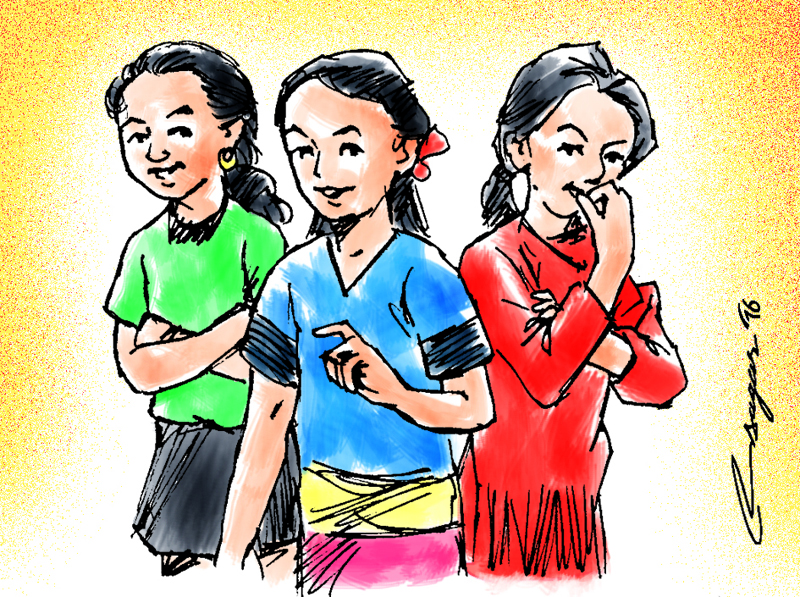Economic progress: Invest in 10-year-old girls
The recently adopted National Strategy on Ending Child Marriage and the investment in adolescent-friendly services are great examples that policies and strategies are moving in the right direction. Much more needs to be done to ensure these policies and commitments are implemented
The United Nations Population Fund (UNFPA) issues a report every year on “The State of the World Population” to sensitize governments, leaders, policy makers, planners, community leaders and the general public on key population priority issues.
This year’s report launched on 20 October in several countries around the world focuses on “10: How our future depends on a girl at this decisive age.”
The Sustainable Development Goals (SDGs) adopted by 193 member States in 2015, including Nepal, aim to leave no one behind.
However, every year millions of girls are left behind--already at age 10, when adolescence begins. The State of the World Population 2016 provides compelling evidence on the importance of investing in the world’s 60 million 10-year-old girls as they start their journey from adolescence into adulthood.
Today’s 10-year-old girls will be 24 when the SDGs will come to an end in 2030.
The real test of success of the SDGs, according to the report, is whether a 10-year-old girl today is provided with the opportunity to be healthy, educated and productive 15 years from now.
Failure to invest effectively in 10-year-old girls now may hamper economic growth and overall progress for years, if not generations. Removing the barriers that hold 10-year-old girls back today will increase the chances that the agenda will be a success, the report argues.
In some parts of the world, a 10-year old girl is provided with many options and begins making choices that will influence her education, future work and personal life.
In other parts of the world, however, a girl who goes through puberty is suddenly seen as a commodity that may be bought, sold or traded. She may be forced to marry, pulled out of school and expected to start bearing children and begin a lifetime of servitude.
Although risks abound for both girls and boys, gender discrimination makes these risks far worse for girls in almost every way. Girls are less likely than boys to complete formal schooling at the secondary and university levels, more likely to be in poorer physical and mental health, and will find it harder to get decently paid jobs.
With marriage often comes pregnancy, and with early pregnancy comes health risks and an end to a girl’s education and a vicious cycle of enduring poverty.
The State of the World Population 2016 has brought to light some startling statistics: Nine out of ten 10-year-old girls live in developing countries, and one in five lives in a least developed country: one in five is in India, and one in eight in China.
Each year of education delivers an additional 11.7 percent uplift in wages in later life for girls (compared with 9.6 percent for men). Yet, 16 million girls between 6 and 11 will never start school, twice the number of boys.
If all the 10-year-old girls who drop out of school or do not attend school in developing countries completed secondary education, they would trigger a $21 billion annual dividend.
Ten percent of 5 to 14 year-old girls do more than 28 hours of household chores per week, twice that of boys. Three in four girl labourers are unpaid. Every day, an estimated 47,700 girls are married before 18.
Adolescent girls (10-19 years) are a significant portion of Nepal’s population. There are more than six million teenagers, of whom about half are girls—one fourth of the country’s total population (CBS Population Projection for 2016).
Around 24.5 percent of girls aged 15-19 are currently married or in union and 16 percent of women aged 20-24 years have already had at least one live birth before reaching 18 (Nepal Multiple Indicator Cluster Survey 2014).
It also shows that around 35 percent of women aged 10-24 are dropping out of school, college or university and the adolescent birth rate — 71 births per 1,000 women aged 15-19 years— is one of the highest in South Asia.
We must put the health, safety, education and rights of girls at the forefront of the development agenda. Equally important is the need to scale up programmes to help girls get to school and stay there longer, protect their health and rights, prevent child marriage, violence in the home and community, and other harmful practices as well as encourage boys to be part of the solution.
A girl who completes a secondary education and makes a healthy transition to adulthood can expect a tripling of her income, according to the same report. Thus, if we help build a brighter future for them, we’ll build a brighter future for us all.
The Government of Nepal and the many organizations who work in this area have shown a strong commitment to protecting and promoting adolescent girls’ rights to health, education and protection.
The recently adopted National Strategy on Ending Child Marriage and the investment in adolescent-friendly services are great examples that policies and strategies are moving in the right direction. However, much more needs to be done to ensure that these policies and commitments are fully implemented and resourced adequately to make Nepal a better place for all adolescent girls.
We must provide girls with the information and services they need to develop their potential. Nepal’s future and the achievements of the SDGs is very much linked to the attention it will pay to this young generation.
Giulia is the Country Representative of UNFPA for Nepal.
READ ALSO:
UN urges greater investment in the world's 10-year-old girls






